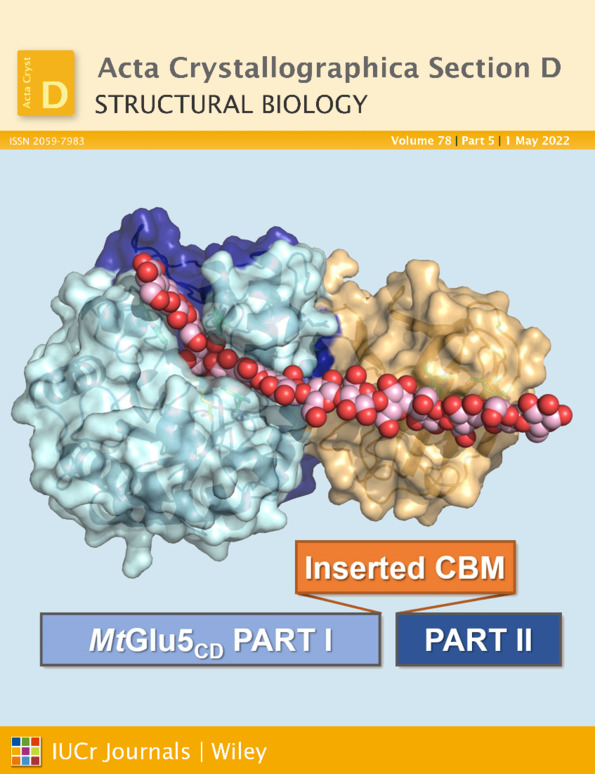Monoclonal antibody 7H2.2 binds the C-terminus of the cancer-oocyte antigen SAS1B through the hydrophilic face of a conserved amphipathic helix corresponding to one of only two regions predicted to be ordered
Abstract
The structure of the antigen-binding fragment (Fab) of mouse monoclonal antibody 7H2.2 in complex with a 15-residue fragment from the metalloproteinase sperm acrosomal SLLP1 binding protein (SAS1B), which is a molecular and cellular candidate for both cancer therapy and female contraception, has been determined at 2.75 Å resolution by single-crystal X-ray diffraction. Although the crystallization conditions contained the final 148 C-terminal residues of SAS1B, the Fab was observed to crystallize in complex with a 15-residue fragment corresponding to one of only two elements of secondary structure that are predicted to be ordered within the C-terminal region of SAS1B. The antigen forms an amphipathic α-helix that binds the 7H2.2 combining site via hydrophilic residues in an epitope that spans the length of the antigen α-helix, with only two CH–π interactions observed along the edge of the interface between the antibody and antigen. Interestingly, the paratope contains two residues mutated away from the germline (YL32F and YH58R), as well as a ProH96-ThrH97-AspH98-AspH99 insertion within heavy chain CDR3. The intact 7H2.2 antibody exhibits high affinity for the SAS1B antigen, with 1:1 binding and nanomolar affinity for both the SAS1B C-terminal construct used for crystallization (3.38 ± 0.59 nM) and a 15-amino-acid synthetic peptide construct corresponding to the helical antigen observed within the crystal structure (1.60 ± 0.31 nM). The SAS1B–antibody structure provides the first structural insight into any portion of the subdomain architecture of the C-terminal region of the novel cancer-oocyte tumor surface neoantigen SAS1B and provides a basis for the targeted use of SAS1B.




